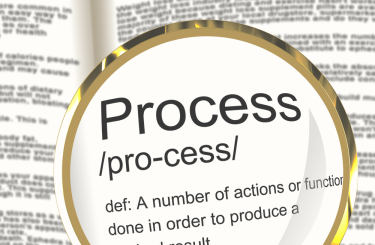
Our Process
Too often systems are developed from a functional specification that doesn't accurately portray how the users of a system will be using it in their daily work processes. We have developed a process that works to avoid that problem.
We want to ensure that users are not forced to change the way they want to work to fit a new solution. Our process results in a solution that fits the way users want to do their work, ensuring user adoption—a critical success factor.
While functional specifications are helpful, they often do not portray the whole story. Through a series of “Day in the Life” and Storyboard sessions, the TrueTandem “Making It Real” process ensures that the full story behind our clients’ specifications is captured.
Engage our services
Making It Real (MIR) Process
TrueTandem has developed a multistep "Make It Real" (MIR) methodology based on Microsoft’s Dynamics SureStep Agile process that we use to deliver fully functional and usable systems.
PHASE I: Getting the Story Right
Series of “Day in the Life” Sessions
We engage in a series of “Day in the Life” sessions in which our consultants spend time talking to your business leaders and users about what they do every day and the best way to get things done. We walk through your existing processes by literally following a business process as it travels through the organization. This insight allows us to understand the how and why of your existing process as well as uncover potential opportunities for improvements.
These sessions are focused on:
- Understanding what needs to get done rather than the technology used
- Determining the “why” of actions and the reasons behind what needs to get done
Storyboard Scenarios
After each “Day in the Life” session is complete, we storyboard out basic scenarios of what people need to get done and the reasons behind it.
- These storyboards create real world scenarios based on what needs to get done from a business perspective rather than just from a feature / function perspective.
- While not every scenario needs to be created, the main or most complex scenarios are targeted to give the best understanding of what business objectives need to be accomplished.
Construction Planning
The joint team takes the approved storyboard scenarios and determines the order of implementation to:
- Get functionality into users’ hands as quickly as possible
- Ensure highest priority items are addressed first
PHASE II: Creating a Culture of Delivering
Agile-plus Methodology
The second part of a successful delivery project is creating a culture of delivering results through the project. Our experience in developing applications recommends an Agile-plus methodology because of its fundamental themes of reducing risk, promoting frequent inspections/checkpoints on progress and adaptability.
Unlike other methodologies which have longer planning phases, Agile focuses on “time boxed” cycles in which each cycle includes:
- Planning
- Requirements review
- Designing
- Coding
- Unit testing
- Acceptance testing
“Agile methodologies generally promote: A project management process that encourages frequent inspection and adaptation; a leadership philosophy that encourages team work, self-organization and accountability; a set of engineering best practices that allow for rapid delivery of high-quality software; and a business approach that aligns development with customer needs and company goals.” (http://en.wikipedia.org/wiki/Agile_software_development)
TrueTandem Cycles
The development team(s) will work with the application sponsor to determine a mutually agreeable timeframe for each cycle/iteration. Typically cycles last two to four weeks. However, the more time you give someone to deliver, the further off your project can be before you realize it.
So while a cycle/iteration can be up to four weeks, the TrueTandem MIR insists that everyone have weekly deliverables.
By keeping everyone focused on what they have to get done that week, people stay focused, issues are identified quickly and projects cannot venture far off before it is realized. Weekly deliverables also do not allow people to rely on the “eternal weekend” (which doesn’t exist) to get things done.
Cycle/iteration releases get the solution into your users’ hands faster helping to ensure the solution meets your needs and helps foster adoption.
What Happens When We Are Done?
Post Production
Reality is the best test bed for any solution. We don’t disappear after the push to production is complete, and we don’t stick around billing you endlessly. Customers often find they would like small changes made or have questions about different scenarios. Our engagements include a period of post-production support to help address your needs. Ongoing support can also be provided, based on your needs.
Learn More About TrueTandem MIR
The goal of the TrueTandem team is to develop a solution that fits as seamlessly as possible into what users and the organization are already familiar with. By implementing the TrueTandem MIR Process, we can create solutions that fit the way business users want to do their work.

